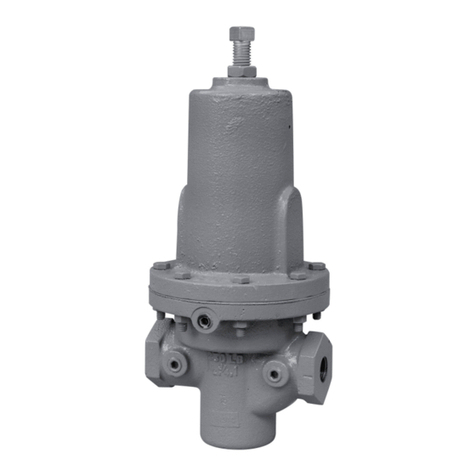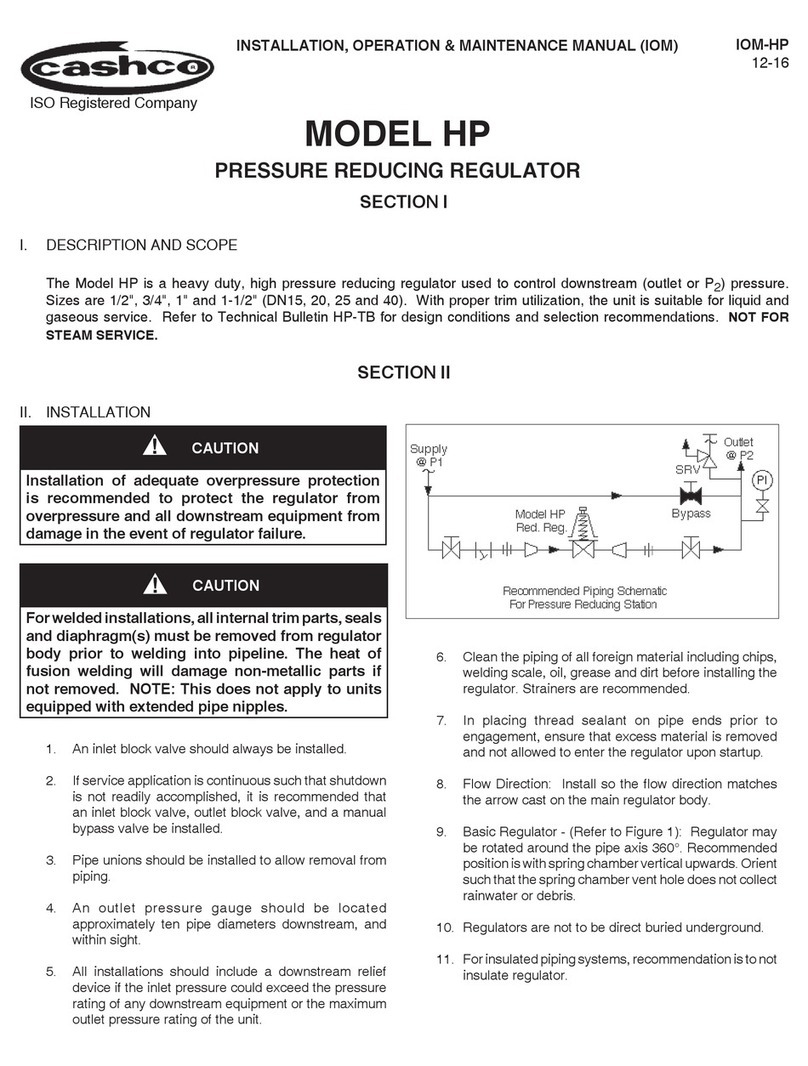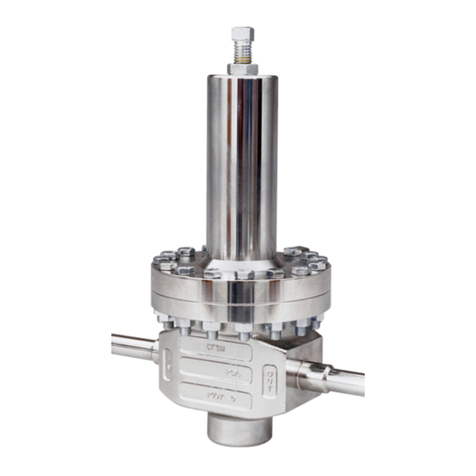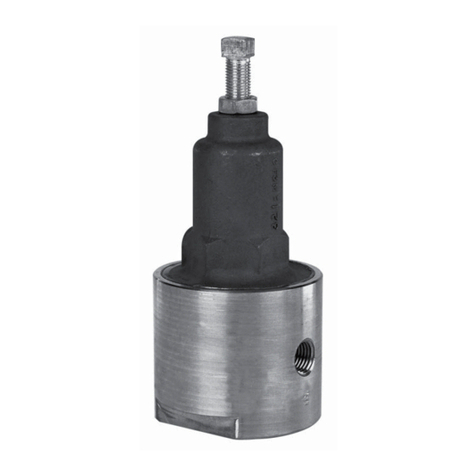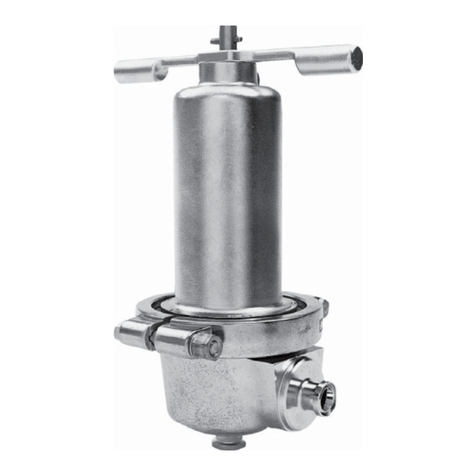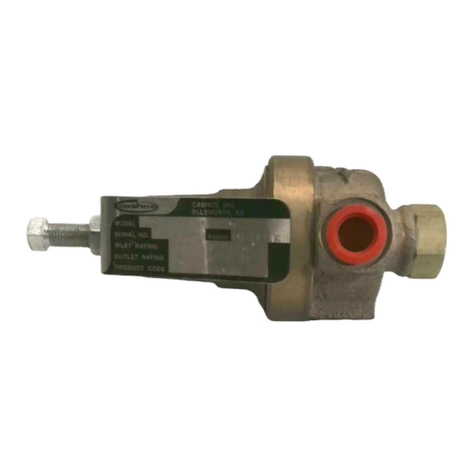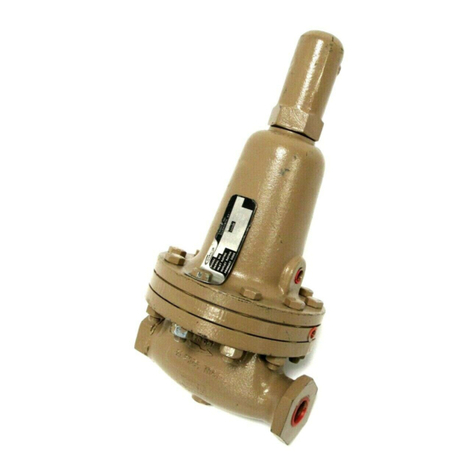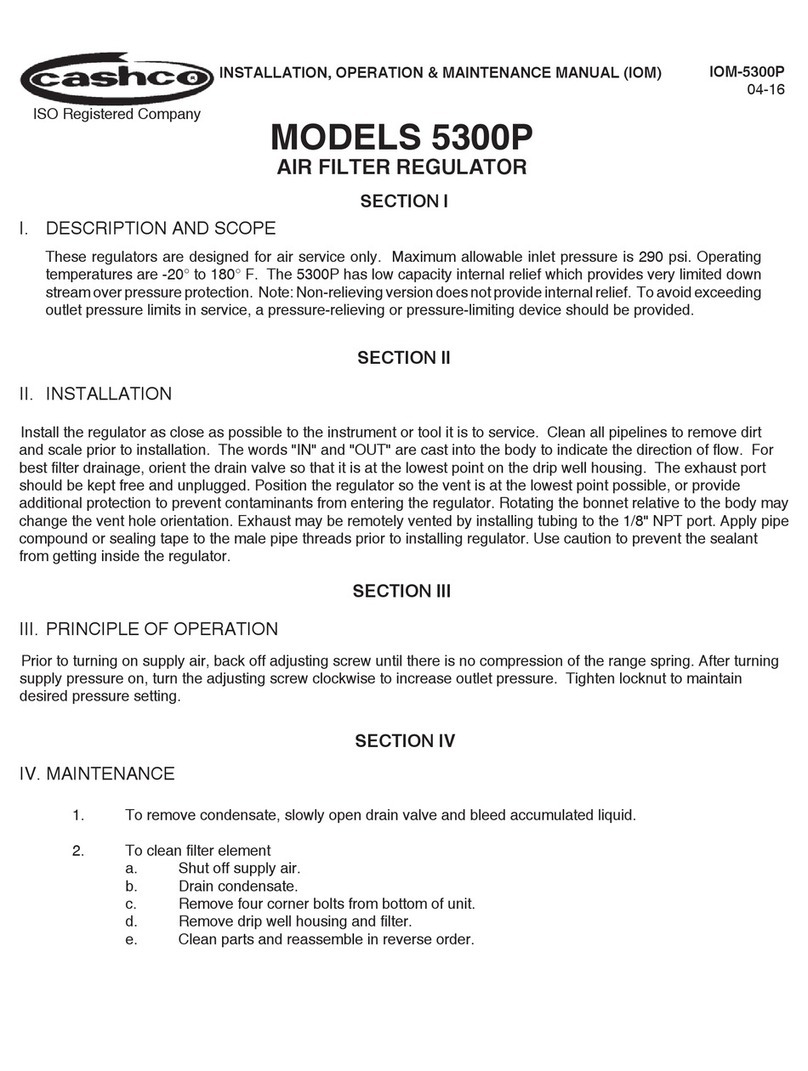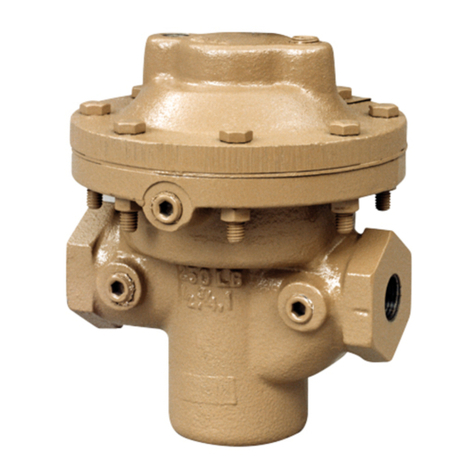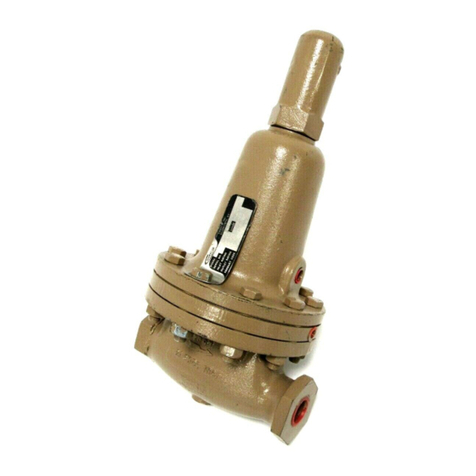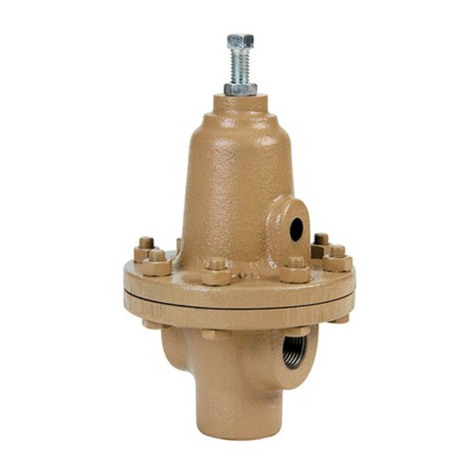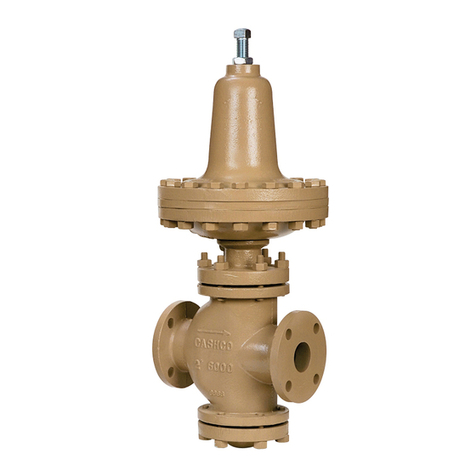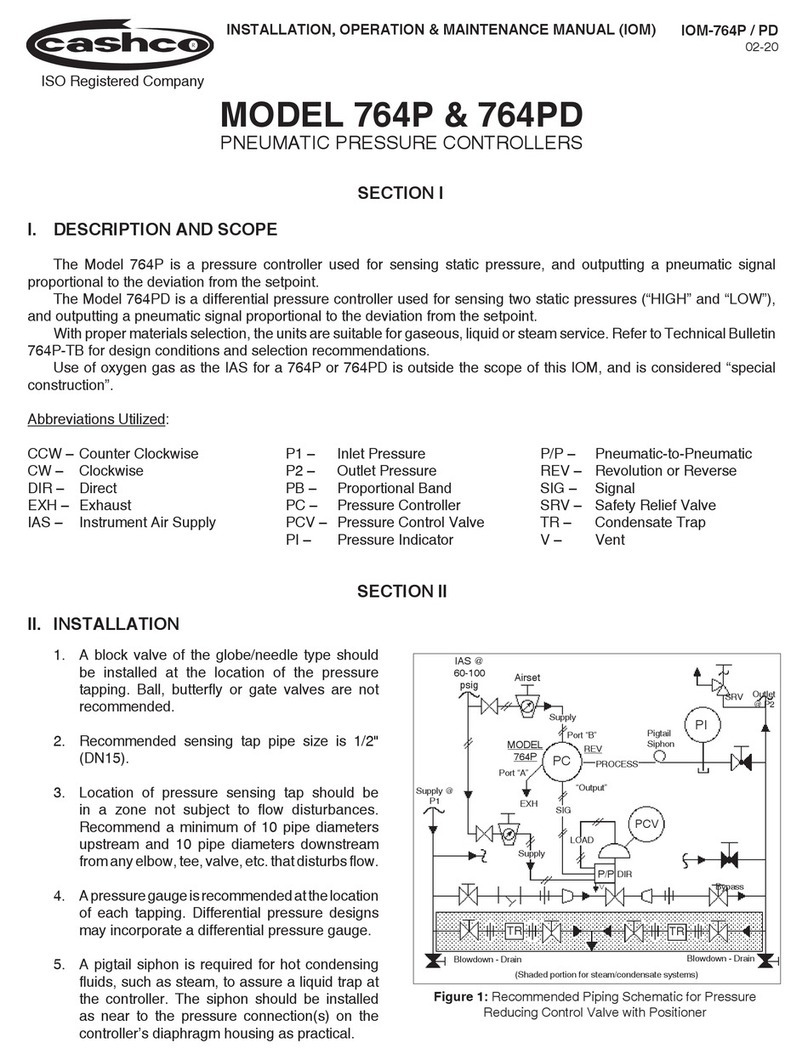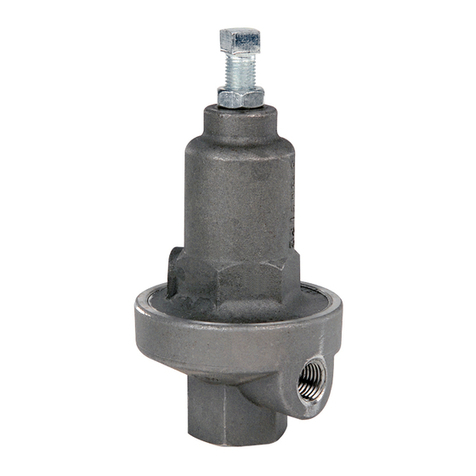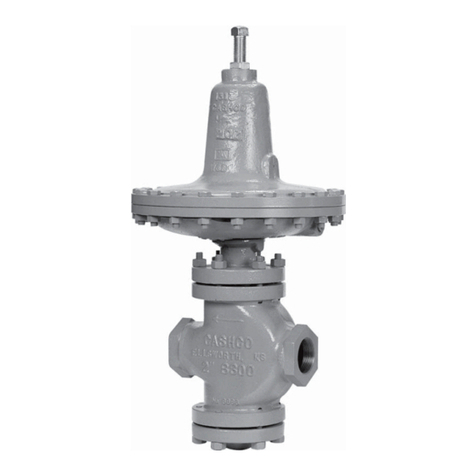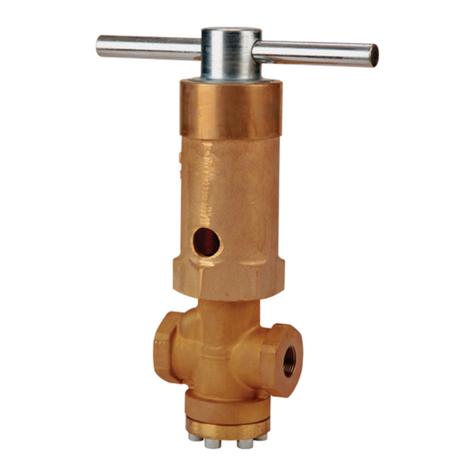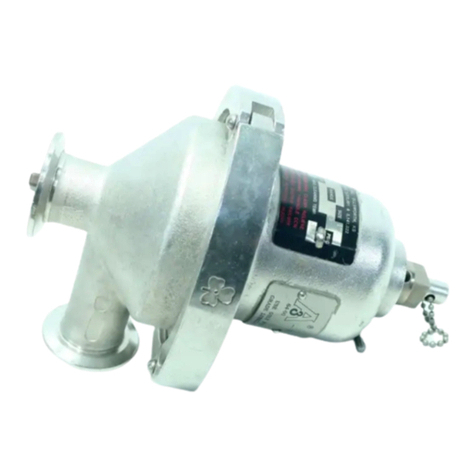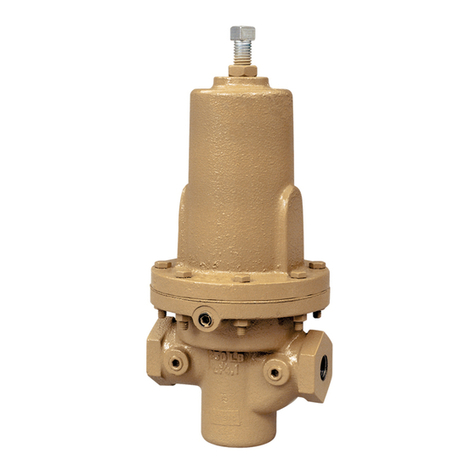
IOM-D/DL
4
button (4) where adjusting screw (6) bears. Set
spring button onto top of range spring; ensure
spring button is laying flat.
11. Aligning the matchmarks, place spring chamber
(2) over the above stacked parts. Install all bolts
(8), washers (26), and lock washers (25), by
hand. Mechanically tighten bolting in a cross
pattern that allows spring chamber to be pulled
down evenly. Recommended torque values are
as follows:
NOTE: Never replace bolting (8) with just any bolting
if lost. Bolt heads are marked with specification
NOTE: On regulators originally supplied as
“oxygen clean”, Option D-5 , D-36, D-55, or
DL-55, maintenance must include a level
of cleanliness equal to Cashco cleaning
standard #S-1134. On regulators originally
supplied as “cleaned for Pharmaceutical and
Food applications”, Option D-37 or D-37S,
maintenance must include a level of cleanliness
equal to Cashco cleaning standard #S-1576.
Contact factory for details.
7. Reinstall the pusher plate (11). Ensure proper
position of flat surface being downwards.
Ensure centered.
8. Reinstall a new cylinder gasket (18). Press firmly
and evenly into place using the cylinder (16). Do
not use a “homemade” cylinder gasket.
9. Reinstall the cylinder (16) concentrically within
the body cap (5) opening.
10. If supplied with Opt-4 Stabilizer, install new
stabilizer seal (32) properly oriented onto piston
(15). See Figure 1.
11. Slide the piston (15), including stabilizer seal
(32) if supplied, slowly into place, assuring that
the piston post slides into the female groove
of the pusher plate (11). Use thumbs to ease
stabilizer seal into cylinder (16).
12. Place piston spring (17)
into
piston (15) cavity.
13. Use pipe thread sealant applied to the body
cap (5) threads. Thread body cap into body (1)
as tight as possible by hand, then tighten to the
following torque values.
For 3/8" & 1/2" size body cap - tighten cap to
between 70 - 80 Ft-Lbs torque.
For 3/4" & 1" size body cap - tighten cap to
between 125-150 Ft-Lbs.
14. Bench test unit for suitable operation. NOTE:
Regulators are not tight shutoff devices. Even if
pressure builds up beyond set point, a regulator
may or may not develop bubble tight shutoff. In
general, tighter shutoff can be expected with
composition seat.
15. Spray liquid leak detector around body cap (5)
and body (1) for test for leakage. Test pressure
should be a minimum of 100 psig (6.9 Barg) at
the inlet. Outlet should be tested to upper value
of range spring (14).
NOTE: Comp seats are not removable from
piston (15) assemblies. If composition seat is
damaged, replace entire piston assembly.
identification markings. Use only proper grades as
replacements.
12. Reinstall adjusting screw (6) with jam nut (7).
13. Test for external leakage by spraying liquid
leak detector around bolting (8) and body (1)
and spring chamber (2) flanges. Ensure that an
outlet pressure is maintained during this leak
test of at least mid-range spring level; i.e. 10-40
psig (.69 - 2.8 Barg) range spring, 25 psig (1.7
Barg) test pressure minimum.
C. Trim Replacement:
1. Install body (1) in a vise with the body cap (5)
on top and the body flange downwards.
NOTE: Do not secure by the adjusting screw (6)
or jam nut (7).
2. Loosen and remove body cap (5).
3. Remove piston spring (17), piston (15), cylinder
(16) and pusher plate (11). For Opt.-20 the
pusher plate cannot be removed from this
position. Inspect parts for excessive wear, espe-
cially at seat surfaces. Replace if worn, nicked
or depressed. (Valves equipped with Opt-4
Stabilizer will have the u-cup stabilizer seal (32)
removed when the piston is removed from body
(1). Remove stabilizer seal, if installed).
4. Remove the cylinder gasket (18) and clean
contacting surface of body (1).
5. Clean flat mating surfaces of body (1) to body
cap (5) shoulder.
6. Clean debris from within body (1) cavity. Clean
parts to be reused.
Model Regulator
Size
Bolt
Size
Metal & Comp.
Diaphragm
D3/8" thru 1"
(DN10 thru 25) 5/16"-24 20-24 Ft-Lbs
(27-32 N-m)
DL 1-1/2" thru 2"
(DN40 thru DN50) 1/2"-20 50-54 Ft-Lbs
(67-73 N-m)
